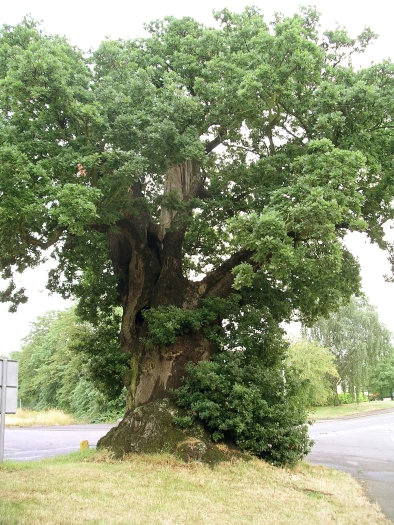Italian Common Oak
(Quercus robur subsp. brutia)
Italian Common Oak (Quercus robur subsp. brutia)
/
/

The Snowmanradio Wikipedia. (Original text: snowmanradio)
CC BY-SA 3.0
Image By:
The Snowmanradio Wikipedia. (Original text: snowmanradio)
Recorded By:
Copyright:
CC BY-SA 3.0
Copyright Notice:
Photo by: The Snowmanradio Wikipedia. (Original text: snowmanradio) | License Type: CC BY-SA 3.0 | License URL: http://creativecommons.org/licenses/by-sa/3.0/ | Uploader: Hohum | Publisher: Wikimedia Commons | Title: Baginton_oak_tree_july06.JPG | Notes: |

Estimated Native Range
Climate Requirements for Valley Stream, New York
| This Plant | Your Site | Plant Suitability for Your Location | ||
|---|---|---|---|---|
| • Precipitation | 38" - 39" | 43" | Aquatic | Aquatic |
| • High Temp. | 86°F - 86°F | 84°F | OK, but your summers are milder than normal for this plant | OK |
| • Low Temp. | 40°F - 40°F | 24°F | Your winter temperatures may be too cold for this plant | Too cold |
This plant may not grow well at your location - your precipitation is too high.
Summary
Quercus robur subsp. brutia, commonly known as Italian Common Oak, is a deciduous tree native to Southeastern Europe, including Italy, Greece, and the Balkan Peninsula. It is typically found in a variety of habitats such as lowland forests, forest edges, and along riverbanks. This subspecies of the English Oak reaches a height of 25-40 feet (8-12 meters) and a width of 20-30 feet (6-9 meters), with a rounded canopy and a robust, spreading habit. The Italian Common Oak is notable for its deeply lobed, dark green leaves that turn yellow and brown in autumn before shedding. It produces inconspicuous yellowish-green catkins in spring, followed by characteristic acorns that are valuable food sources for wildlife.
The Italian Common Oak is valued for its adaptability to various soil types, its tolerance of both full sun and partial shade, and its relatively low water requirements once established. It is a resilient tree that can be used in urban environments, parks, and large gardens. It is also appreciated for its historical significance in Europe, where it has been used for centuries in traditional construction and carpentry. While it is generally disease-resistant, it can be susceptible to oak wilt and powdery mildew. Gardeners should be aware of its potential to host the oak processionary moth, which is a pest in some regions. Despite these issues, its ease of maintenance and ecological benefits make it a worthwhile addition to many landscapes.CC BY-SA 4.0
The Italian Common Oak is valued for its adaptability to various soil types, its tolerance of both full sun and partial shade, and its relatively low water requirements once established. It is a resilient tree that can be used in urban environments, parks, and large gardens. It is also appreciated for its historical significance in Europe, where it has been used for centuries in traditional construction and carpentry. While it is generally disease-resistant, it can be susceptible to oak wilt and powdery mildew. Gardeners should be aware of its potential to host the oak processionary moth, which is a pest in some regions. Despite these issues, its ease of maintenance and ecological benefits make it a worthwhile addition to many landscapes.CC BY-SA 4.0
Plant Description
- Plant Type: Tree
- Height: 25-40 feet
- Width: 20-30 feet
- Growth Rate: Moderate
- Flower Color: N/A
- Flowering Season: Spring
- Leaf Retention: Deciduous
Growth Requirements
- Sun: Full Sun, Part Shade
- Water: Medium
- Drainage: Medium
Common Uses
Bee Garden, Bird Garden, Butterfly Garden, Low Maintenance, Rabbit Resistant
Natural Habitat
Native to a variety of habitats such as lowland forests, forest edges, and along riverbanks in Southeastern Europe
Other Names
Common Names:
Scientific Names: Quercus robur subsp. brutia, Quercus brutia, Quercus thomasii, Quercus robur var. brutia, Quercus robur var. thomasii, Quercus brutia var. thomasii, Quercus pedunculata subsp. brutia
GBIF Accepted Name: Quercus robur subsp. brutia (Ten.) O.Schwarz